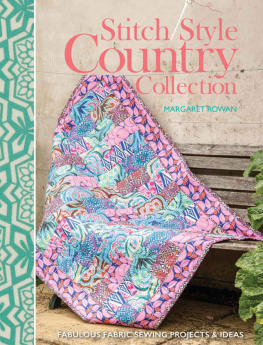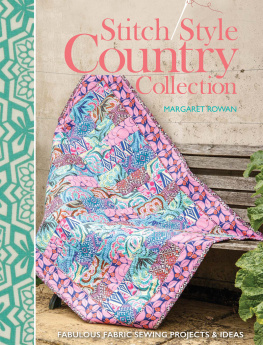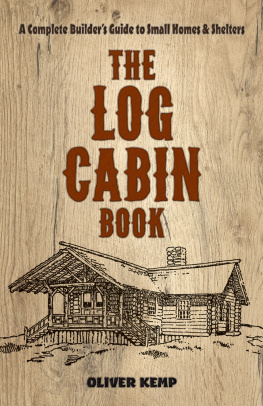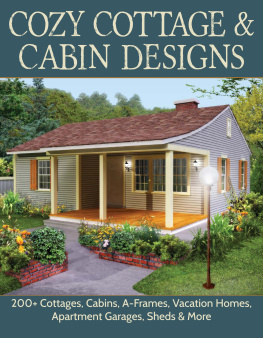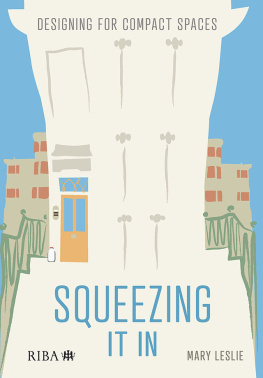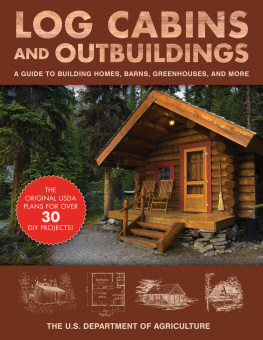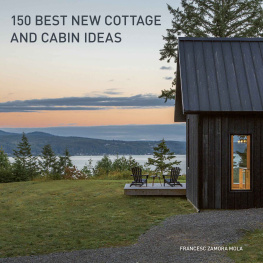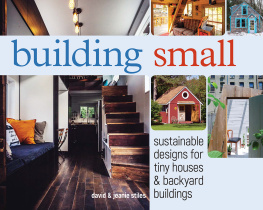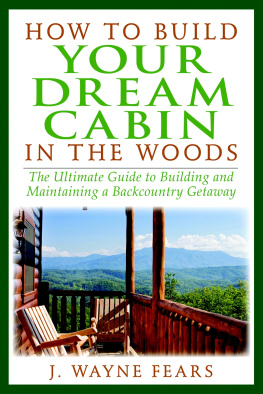Rowan - Compact Houses
Here you can read online Rowan - Compact Houses full text of the book (entire story) in english for free. Download pdf and epub, get meaning, cover and reviews about this ebook. year: 2013;2010, publisher: Storey Publishing, LLC, genre: Home and family. Description of the work, (preface) as well as reviews are available. Best literature library LitArk.com created for fans of good reading and offers a wide selection of genres:
Romance novel
Science fiction
Adventure
Detective
Science
History
Home and family
Prose
Art
Politics
Computer
Non-fiction
Religion
Business
Children
Humor
Choose a favorite category and find really read worthwhile books. Enjoy immersion in the world of imagination, feel the emotions of the characters or learn something new for yourself, make an fascinating discovery.

- Book:Compact Houses
- Author:
- Publisher:Storey Publishing, LLC
- Genre:
- Year:2013;2010
- Rating:4 / 5
- Favourites:Add to favourites
- Your mark:
- 80
- 1
- 2
- 3
- 4
- 5
Compact Houses: summary, description and annotation
We offer to read an annotation, description, summary or preface (depends on what the author of the book "Compact Houses" wrote himself). If you haven't found the necessary information about the book — write in the comments, we will try to find it.
Rowan: author's other books
Who wrote Compact Houses? Find out the surname, the name of the author of the book and a list of all author's works by series.
Compact Houses — read online for free the complete book (whole text) full work
Below is the text of the book, divided by pages. System saving the place of the last page read, allows you to conveniently read the book "Compact Houses" online for free, without having to search again every time where you left off. Put a bookmark, and you can go to the page where you finished reading at any time.
Font size:
Interval:
Bookmark:
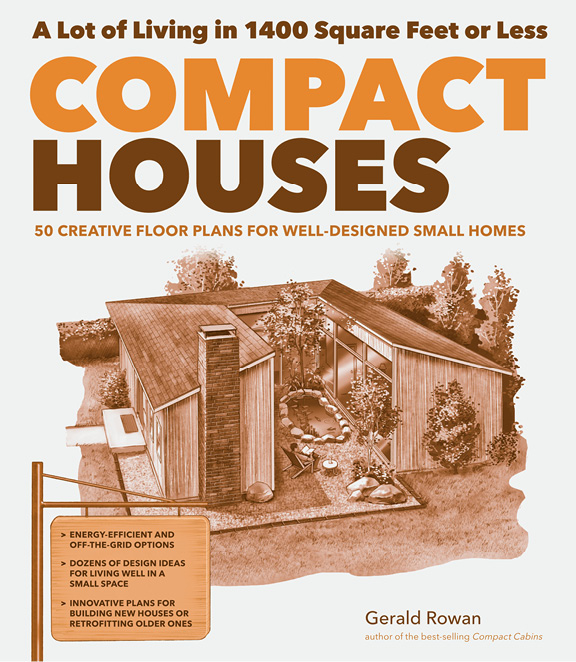
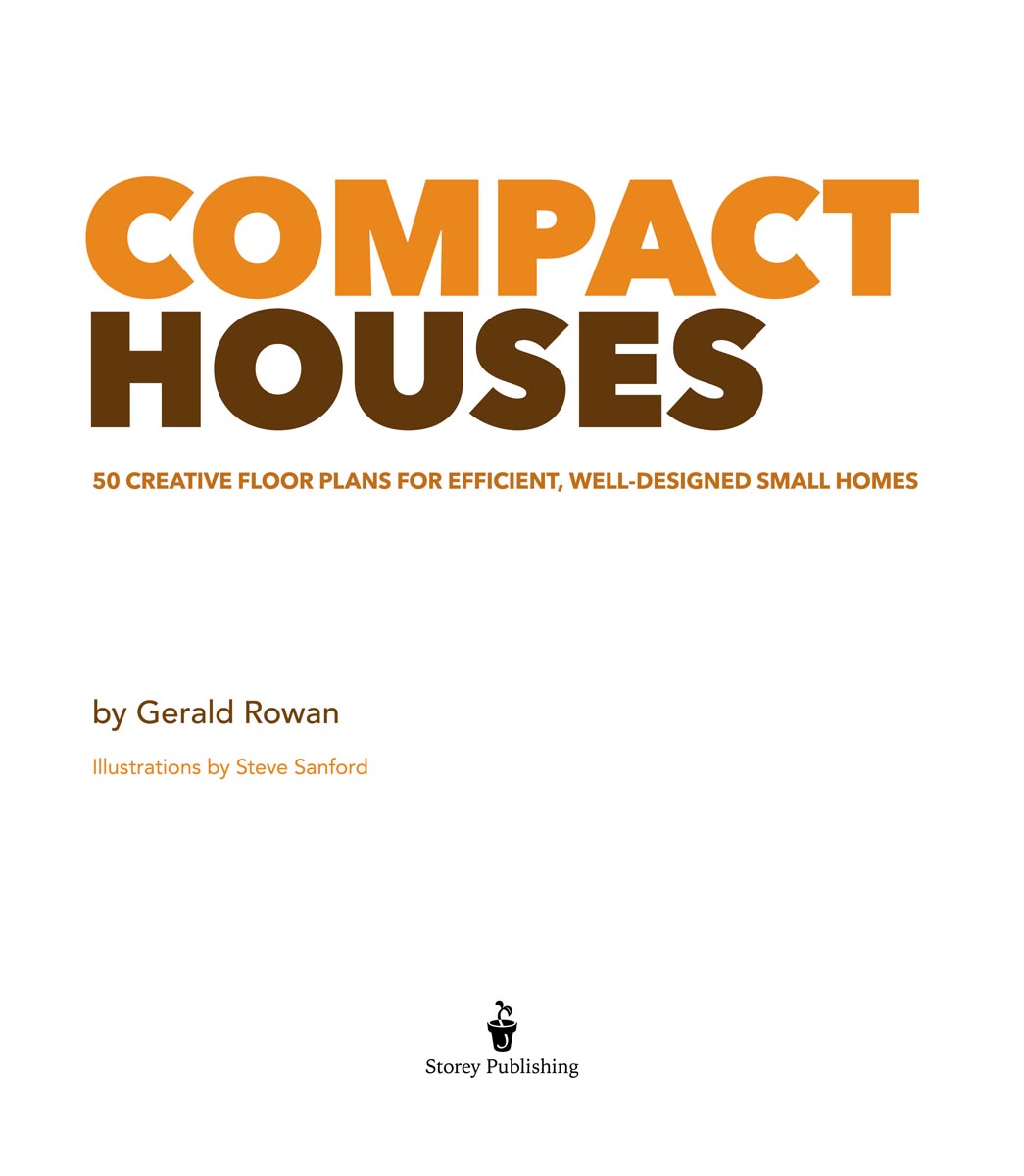
Most of us dream of having a place of our own. Some of us dream large, but more and more of us are dreaming of something small.
Perhaps we long to own our first house something on the smaller side because were just starting out. Perhaps we are empty nesters, downsizing into more practical space. Perhaps we want to build a little place of our own, with our own hands. Perhaps we want to build small in order to live mortgage-free. Perhaps we want to minimize the impact of our home on the environment.
Whatever the reason, a compact home offers advantages across the board: reduced building time, reduced use of building materials, less impact on the environment, smaller carbon footprint, and less maintenance once its built. With these savings, a compact home also allows for quality materials, solid craftsmanship, and even a few touches of luxury. These characteristics would appeal to any homeowner.
Some potential homeowners may object to the idea of a small house, perhaps equating the concept of small with cramped, crowded living quarters. But with good design, a compact home is a comfortable one. It feels welcoming. As with any home, its particular character depends on its designers and owners. Some may want their compact home to be warm and cozy; others may prefer a more spartan aesthetic, with neatness and efficiency the ruling principles. The point is that design, not square footage, determines a homes worthiness. And good design is the focus of this book.
This book is intended for folks who want to have a hand in designing or building a compact home that fits their needs in a simple, affordable, ecologically sustainable way. Whether you are a home designer, builder, owner, or some combination of the three, youll find useful advice here on the criteria for critical house elements, such as room layouts, power sources, appliances, furnishings, and space-saving (or space-enhancing) design features. Each element plays a role in the aesthetic and functioning of the home, but most important is the way in which all the elements work together. Successful small-space design is a gestalt process. Gestalt describes a group of components that function as a unit and are so integrated that the units properties are not derivable by a summation of the components. In other words, the whole is more than the sum of its parts. Thats the beauty of a well-designed compact home.
In this book youll find dozens of original home designs in a range of styles and a variety of sizes, from around 800 to 1,400 square feet. But this book is not just for those looking to build a new home. There is a vast range of compact homes already in existence, from bungalows and ranches to Capes and condominiums. Many are in dire need of renovation and thus are available cheap. With a little forethought and consideration of the design imperatives for small-space living, you can readily transform these houses into comfortable, efficient, stylish homes. You can convert a cookie-cutter Cape into a quirky, modern abode; retrofit a dark, dingy ranch into a sleek, open-plan green dwelling; or renovate a shabby old farmhouse to make it the warm, welcoming home it was meant to be.
All advice notwithstanding, I hope to encourage you to draw on your own creativity, building on the concepts developed in this book to arrive at a home plan that is both personal and well designed. Our home is a part of our identity. It is our launching pad and our refuge. To truly serve us well, it must clearly reflect our lifestyle and values. That makes it important to choose the design ideas that are best for us. We are all anxious to jump into our house project, get our hands dirty, and move in as soon as possible. The time we spend up front in the design phase will pay off in a number of ways, reducing building time, helping us avoid mistakes, and adding to our long-term satisfaction.
Though this book offers many design ideas and plans, if you are not a builder or architect, you will need to work with one, or a construction engineer, to create a detailed building plan. You will also need to consult with your local governments building department to make sure that your plans conform to local building and zoning codes.
The 50 designs in this chapter are meant to serve as a starting point for folks who want to have a hand in designing their own space.
The designs are not intended to be final plans. Even if you fall in love with one particular design shown here, youll want to tweak it to make it work for your site, living needs, and aesthetic, and you should work with a builder, architect, or construction engineer to arrive at a working building plan.
The designs are roughly organized first by the number of floors (single-story homes followed by two-story ones) and then the square footage, from smaller to larger. Each design notes the square footage of the home, the number of bedrooms, the number and size of bathrooms, and any unique features, such as a fireplace or an open living plan. Feel free to mix and match elements, incorporating those you like into whatever turns out to be your dream-home design. Kitchens and bathrooms are particularly interchangeable. And dont feel limited to using these designs just for new homes; many of the ideas suggested here can be incorporated into existing houses (see chapter 4 for more on that topic).
Each floor plan is accompanied by an outside view of the home, an illustration showing one style in which the home could be built. Keep in mind that these drawings are just ideas. Any floor plan can be executed in numerous styles, with any number of siding materials and roofing options. What you see here is an interpretation of the floor plan, not a mandate. This is your house, and it should suit your style and needs.
The designs are named for sites and natural places in my home state of Pennsylvania. Many were inspired by those specific locations a home with a 270-degree view named for a hilltop, for example, or a home designed for a wooded setting named for a state forest. You can call them whatever you like, of course.
Note: These floor plans are meant to serve as design inspirations, not decrees. They can and should be changed to suit individual aesthetics and needs, along with the peculiar demands and limitations of the specific building site. Though each of the plans lists its interior square footage, this is an approximate measurement. Any changes you make to the plans will, of course, change the dimensions and square footages. Even if against all odds you decide to follow a plan exactly, your builders construction decisions using 26 versus 24 framing, for example will affect the exact square footage. Here again, I cant emphasize enough the importance of working with a reputable, experienced builder, architect, or construction engineer.
BB = bunk bed
C = upholstered chair
CR = crib
CT = coffee table
D = dresser
DT = dining table
E = entertainment center
ET = end table (or side table)
FB = full-size bed
Font size:
Interval:
Bookmark:
Similar books «Compact Houses»
Look at similar books to Compact Houses. We have selected literature similar in name and meaning in the hope of providing readers with more options to find new, interesting, not yet read works.
Discussion, reviews of the book Compact Houses and just readers' own opinions. Leave your comments, write what you think about the work, its meaning or the main characters. Specify what exactly you liked and what you didn't like, and why you think so.


